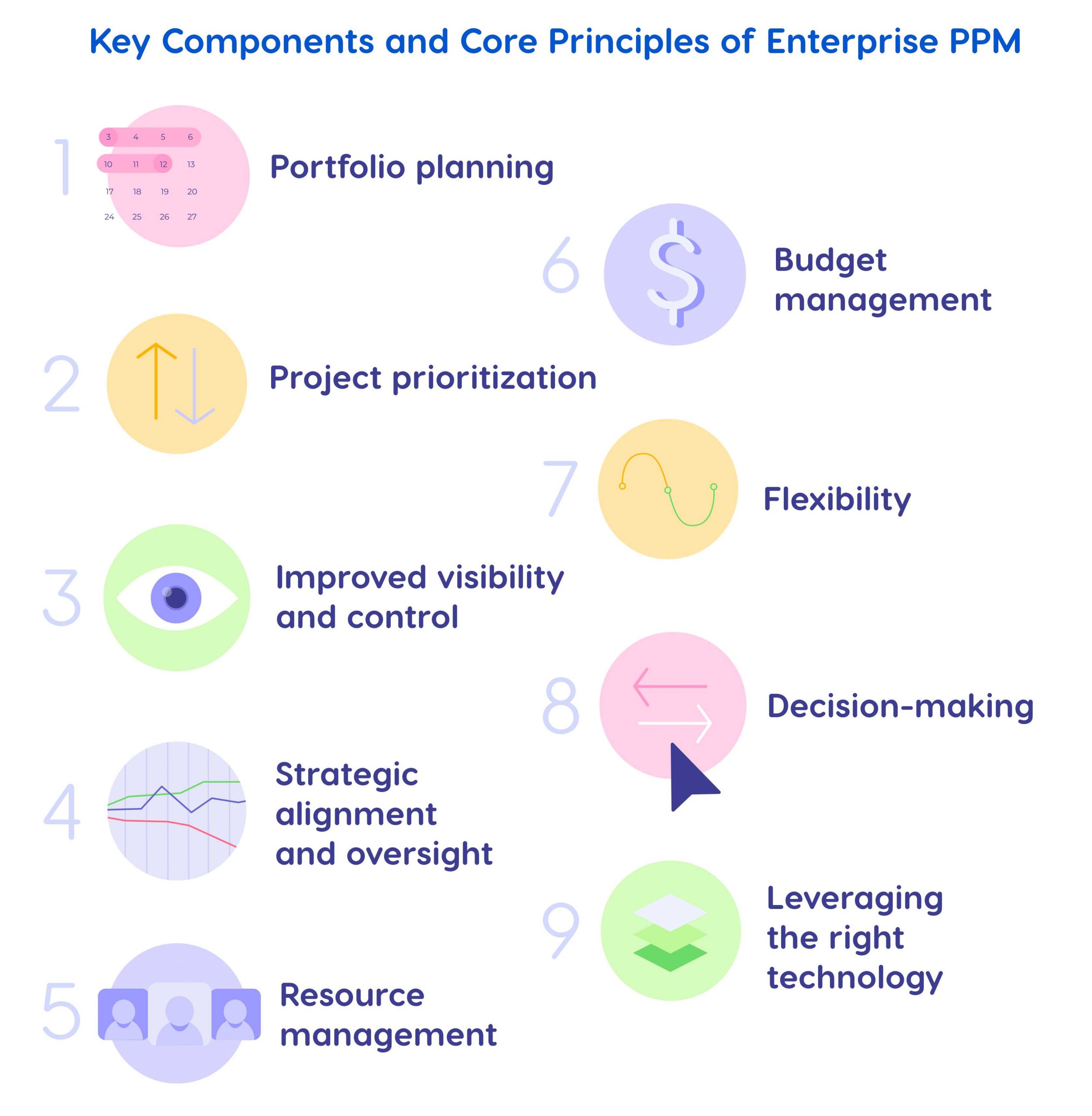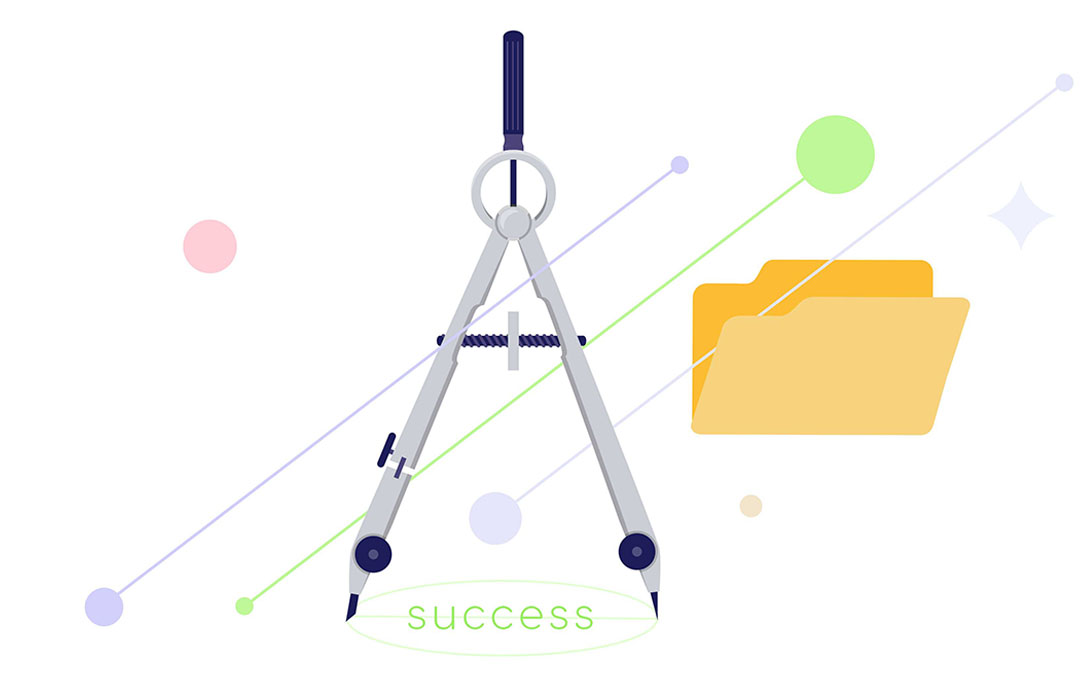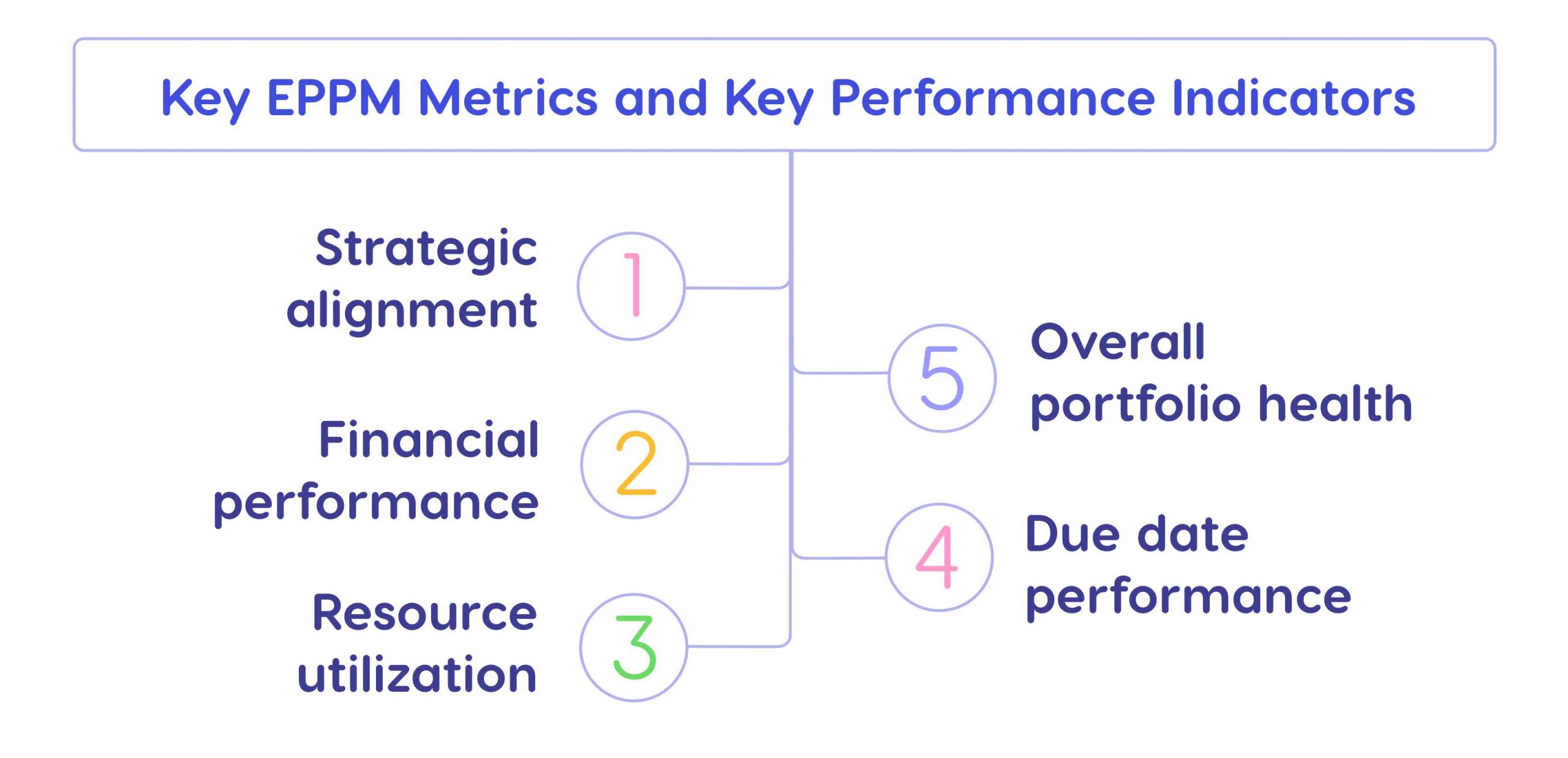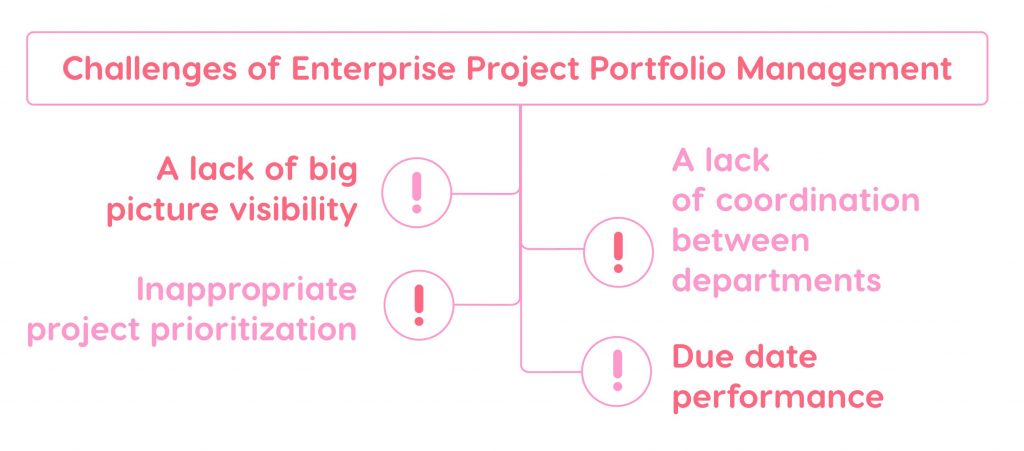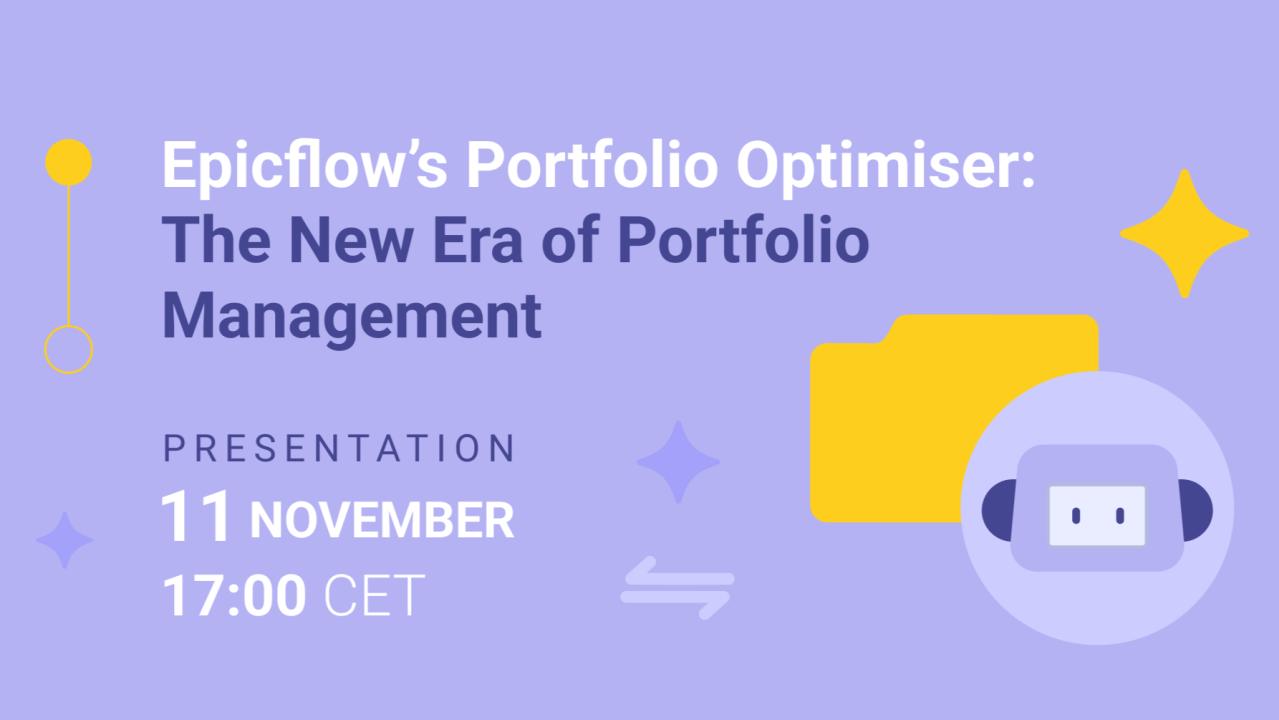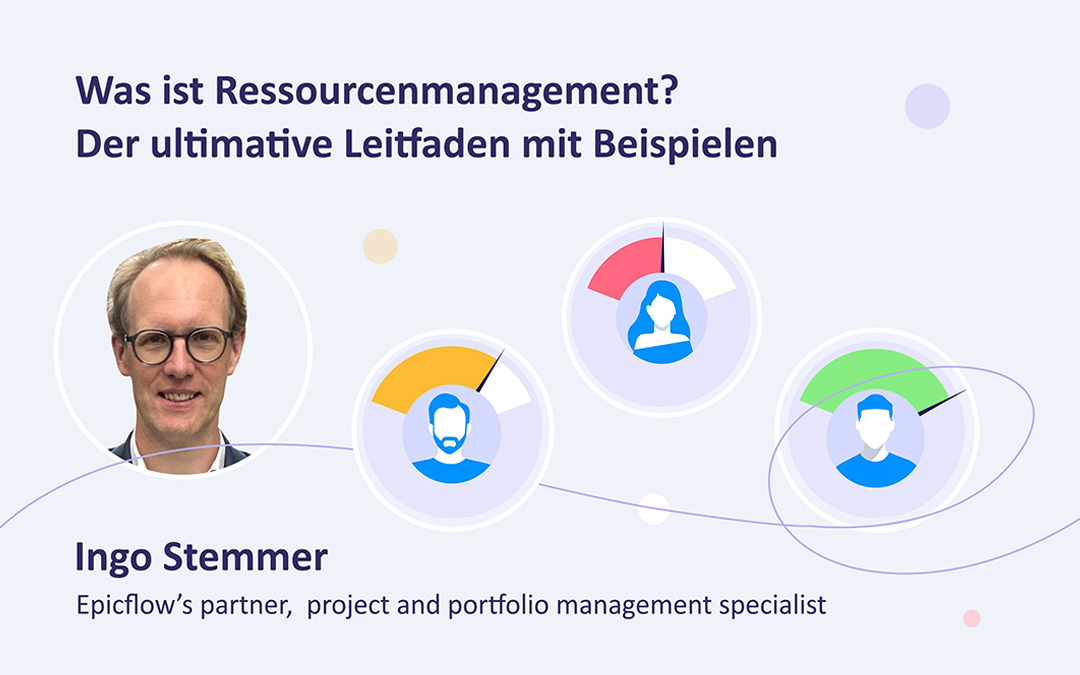![Epicflow – Enterprise Project Portfolio Management Explained: Key Components, Process & Best Practices [2025 Guide]](https://www.epicflow.com/wp-content/uploads/2025/06/Enterprise-Project-Portfolio-Management-Explained_1-1024x640.jpg)
What is EPPM exactly? How does it differ from project portfolio management? How can your organization benefit from its implementation? Read the article to find answers to these and other questions.
What Is Enterprise Project Portfolio Management?
Let’s start with figuring out the EPPM meaning. Enterprise project portfolio management (EEPM) is an integrated approach to managing all programs and portfolios running in an organization. It involves dividing a business strategy into smaller tactical portfolios or programs and implementing them. The main aim of enterprise project portfolio management is ensuring strategic alignment across all organizational departments as well as portfolios, projects, and programs they are running. In turn, this helps organizations set the right priorities, achieve strategic alignment and business objectives.
In simple words, when different departments of an organization implement programs and portfolios, EPPM provides the organization’s management with comprehensive visibility into all these portfolios and makes sure they contribute to achieving a company’s strategy.
Obviously, doing enterprise project portfolio management is not mandatory for all types of organizations. It’s suitable for large companies running multiple projects with a shared resource pool, e.g., large enterprises in all sectors, government organizations dealing with diverse initiatives, software development companies, R&D organizations, and others.
Project portfolio management vs. enterprise project portfolio management
The main difference between these two disciplines is in their scale. While project portfolio management serves the portfolio management needs of a certain department of a company or one of its business units, EEPM looks at the entire organization. In other words, it deals with resource allocation, strategic alignment, decision-making, and portfolio management organization-wide.
Key Components and Core Principles of Enterprise PPM
Here are the key principles and components of the effective EPPM process.
- Portfolio planning: EPPM involves strategic work like developing long-term strategic plans and aligning them with organizational strategy. Purposeful planning eliminates the chance for making ad-hoc decisions.
- Project prioritization: Based on the developed strategy, EPPM can help assess projects and prioritize them.
- Improved visibility and control: Having a high-level overview of all portfolios running in an organization is an essential prerequisite for effective portfolio management and their successful execution.
- Strategic alignment and oversight: Effective EPPM involves assessing individual projects in terms of their alignment with a company’s long-term strategy as well as selecting and prioritizing them accordingly. It ensures that all projects and programs at the organizational level are connected and support business goals.
- Resource management: EPPM also aims to optimize the utilization of human and material resources involved in projects. These measures help companies reduce unnecessary spending and maximize the value of the projects delivered.
Read more: Portfolio Resource Management: A Complete Guide
- Budget management: Effective portfolio control along with effective resource optimization reduce unnecessary spending and contribute to maximizing ROI.
- Flexibility: This is the key to successful enterprise portfolio management in the present-day rapidly changing world. The EPPM process must be adaptable to changes and challenges faced by a business organization.
- Decision-making: This is part and parcel of every management process, from single project management to enterprise project portfolio management. Resource allocation, project priorities, project risk mitigation – making these and other management and business decisions is typical for the EPPM process.
- Leveraging the right technology: Finally, implementing all these principles will be impossible without using enterprise-wide portfolio management tools. They provide portfolio managers as well as senior executives with insights and capabilities enabling them to do the right projects across the entire organization.
To sum up, all components of the EPPM process work as a single complex mechanism to support organizational strategy and achieve business goals.
Now, it’s time to consider what benefits organizations get from implementing the multi-component EPPM process.
Why EPPM Matters for Your Business: Benefits of Enterprise Project Portfolio Management
In a nutshell, EEPM provides high-level visibility into all ongoing portfolios and helps ensure their alignment with business goals. Let’s consider the benefits it provides in more detail:
- More efficient utilization of the available resources across the organization: This helps eliminate resource bottlenecks and optimize project performance.
- Maximizing the value of the projects and programs delivered: One of the goals of EPPM involves making sure that the projects deliver maximum ROI and other benefits (e.g., customer satisfaction, increasing efficiency, etc.).
- Better alignment: This goes not only about projects and their alignment with business strategy but also about ensuring that all departments of an organization are on the same page and their work contributes to achieving organizational goals.
- Higher project success rates: When done right, enterprise project portfolio management process increases the success of project delivery. This becomes possible thanks to wise resource allocation and management, real-time visibility and performance control as well as reducing bottlenecks and risks.
- Optimized business performance: Effective EPPM helps utilize available resources effectively and efficiently as well as achieve business goals faster.
As we see, EPPM helps business organizations improve the execution of projects and programs and acts as a bridge between a strategy and its execution.
EPPM Process: From Strategy to Execution
Ok, but how do you establish the entire EPPM process from start to finish? Here are its main steps; following them will help you make enterprise portfolio and project management seamless and effective.
1. Break down a company’s strategy into separate goals.
First things first, you should start with analyzing the entire organization’s strategy and dividing it into smaller manageable objectives. Without that, project selection will be difficult, and you’ll hardly be able to ensure that they are aligned with the strategy.
2. Get an idea of all current projects and all requests for them.
Having determined the goals your organization needs to achieve, you can proceed to selecting the projects that would fit these needs. You should analyze all active projects along with project requests. It’s important that you not only gather the data on current on potential projects, but also assess their scope, timelines, required resources, budget, etc.
3. Assess and prioritize projects based on the determined strategic goals.
As a next step, you should analyze each current and potential project and assess its contribution to achieving the previously determined goals. In addition to strategic alignment, effective assessment should include criteria like ROI potential, risks, availability of resources, etc. You may also identify active projects with zero contribution to the organizational strategy. In this case, you should decide whether it’s reasonable to continue them, keeping the limited resources busy with less important work.
4. Unite the selected projects in the portfolio.
Then, you should unite the selected projects into programs and portfolios. As a result, you should have a big picture of projects and programs to be delivered to achieve a company’s strategic goals.
5. Manage and monitor the project portfolio.
Finally, enterprise PPM requires regular portfolio monitoring and control. Are the projects in execution still aligned with business objectives? Do they deliver the expected benefits? Are there any bottlenecks or inefficiencies detected? Are there any adjustments required? Thorough monitoring and analysis of portfolio and resource performance is the key to achieving the expected results.
So, establishing the right EPPM process will ensure not only successful completion of projects, but also make sure that all these collaborative efforts serve a specific purpose.
Best Practices for Implementing EPPM Successfully
Want to run the enterprise PPM process seamlessly and successfully? These recommendations are here to help you.
Establish EPPM mindset across the organization
It’s critically important that project, program, and portfolio managers involved in EPPM understand the contribution of what they are in charge of. The focus should be shifted towards strategic alignment. This doesn’t mean that they should give insufficient attention to achieving project success, but that doing projects for the sake of projects is no longer relevant. Every project should contribute to the organization’s strategy.
Focus on resource management
This recommendation will remain relevant forever and ever in project management. Projects cannot be implemented without people, and when human resources are distributed across numerous projects, effective human resource management will be the key to high project and portfolio performance. What are the pillars of resource management for effective enterprise PPM? First, allocating resources in line with their capacity, availability, and skills. Second, managing their workloads so nobody is overloaded or idle – this increases productivity and efficiency of project team members. Thirdly, regular resource performance analysis is a must to avoid bottlenecks hampering the workflow. Finally, before starting a new project, always check whether it’s feasible for key resources. Otherwise, there will be a high probability of bottlenecks, delays, and budget overruns.
Analyze scenarios before making decisions
Making the right management decisions when you manage a project portfolio is easier said than done. There is so much data to analyze, and there are so many factors to take into account. Also, when a company runs multiple initiatives at the same time, there are dependencies between projects, e.g., shared resources or overlapping deadlines. This makes the price for improper decisions too high. Fortunately, modern portfolio management tools can relieve the decision-making burden for portfolio managers and C-level executives. They offer an opportunity to simulate various scenarios and analyze their impact, which makes decision-making easier and much more effective.
Select the right portfolio management tools
Let’s continue with the topic of software tools. Apart from decision-making, they offer a variety of other opportunities to manage project portfolios successfully and achieve expected business outcomes faster. Here are just some of their capabilities:
- Comprehensive portfolio overview for effective monitoring and control;
- Dynamic project prioritization for maximizing portfolio outcomes;
- Resource management capabilities (resource capacity planning, resource allocation, performance assessment, workload management, etc.) for maximizing their utilization;
- Budget management: tracking spent vs approved budget, which contributes to increasing ROI;
- Scenario analysis (What-if Analysis) for informed decision-making.
This list of benefits of project portfolio management tools can go on. By the way, all these capabilities are available for users of Epicflow, an enterprise portfolio management tool focused on maximizing resource efficiency across multiple complex projects and overall portfolio outcomes. It has AI-powered resource and portfolio management capabilities that help organizations reduce lead times and maximize performance without investing in more resources. Want to know how? Contact us, and our experts will provide you with the details.
Measuring Success: Key EPPM Metrics and Key Performance Indicators
Like in other activities, enterprise PPM uses specific metrics to assess the effectiveness of processes. There are several areas that organizations should monitor to get an idea of the efficiency of their project management efforts: resources, costs, timelines, and performance. As for project portfolio management, the success criteria become broader, as you need to track strategy execution, operational efficiency, and risks. And finally, enterprise PPM metrics are broader than PPM, as they’re focused on portfolio performance within the entire organization. So, here are some key KPIs organizations can use to track EPPM success. We’ve divided them into several groups.
1. Strategic alignment.
The KPIs included in this group include the following metrics:
- Percentage of projects aligned with the business strategy across the whole organization;
- Benefits Realization Rate shows to which extent the portfolio of projects has achieved the expected benefits.
2. Financial performance.
This group of metrics includes the following ones:
- Return on Investment (or ROI) shows how much benefit you can get upon investing in projects;
- Cost Performance Index helps you track planned vs. actual project costs.
3. Resource utilization.
In contrast to financial metrics, resource utilization is often given insufficient attention. However, knowing resource performance and resource utilization across all programs and portfolios across the organization is critically important. So, what are resource utilization metrics?
- Resource Utilization Rate shows the amount of time employees dedicate to project work;
- Capacity Utilization shows how much of project team members’ capacity is utilized for project work;
- Resource performance may involve the analysis of employees’ output in relation to their capacity.
4. Overall portfolio health.
The real-time data on portfolio health is usually provided by the features of project portfolio management solutions, e.g., Fever Chart or Epicflow’s Bubble Graph which is its advanced version. These tools indicate projects’ health with green, yellow, or red colors depending on their state. Thus, you can assess the state of a portfolio at a glance: how many projects will be delivered on time and within budget, and how many of them require urgent attention.
5. Due date performance.
This KPI shows the percentage of projects completed by the planned due date. In other words, it demonstrates how many projects will be delivered on time and with a delay. For example, in Epicflow’s dashboard, you can check corresponding graphs and get an idea of your portfolio performance in a few clicks.
These were some of the KPIs used to assess the success of EPPM. Most of them are similar to project portfolio metrics, but the main difference is in the scale – EPPM looks into the whole organization, not only individual portfolios.
Read more: Optimizing Portfolio Profit Through DIPP-Guided Resource Allocation
Now, it’s time to take a look at the main challenges you may face when managing enterprise PPM.
Challenges of Enterprise Project Portfolio Management
For better understanding of EPPM work, let’s quickly outline the main challenges they are facing.
A lack of big picture visibility
As EPPM deals with the entire enterprise, its effective work is impossible without visibility into all processes, projects, timelines, and resources across the organization. But at the same time, achieving this comprehensive visibility often becomes challenging due to information overload and inconsistency between departments. Leveraging advanced PPM software with corresponding features can solve this problem.
Inappropriate project prioritization
Despite the obvious benefits of the right project prioritization, it can become challenging. For example, the company’s management can focus only on the financial aspect of portfolio management without sufficient attention to strategy alignment or resource availability. Also, companies aren’t immune to office politics, when projects are selected under the strength of influential managers rather than organization’s strategy.
Resource bottlenecks
Improper resource management across the organization can lead to unavailability of resources required to assign to the highest-value projects. As long as projects in portfolios are interdependent, this may lead to delays, reduce due date performance, and create obstacles on the way to achieving a company’s business goals.
A lack of coordination between departments
One of the goals of enterprise PPM is bringing together organizational departments and business units as well as their portfolio management efforts. However, it can become challenging due to inconsistency between these organizational structures, poor coordination between them, data silos, leveraging different tools and methodologies. A lack of proper integration can reduce the efficiency of enterprise-wide portfolio management efforts.
Final Words
Enterprise PPM has become a necessity for large enterprises running multiple programs and portfolios. It allows them to align all their efforts with strategic objectives, prioritize projects in the right way, and achieve business goals faster. It’s no more about delivering projects for the sake of projects or financial benefits. It’s about doing projects and portfolios that will help your organization grow and move forward.
Enterprise portfolio management software can become a great assistant for increasing the effectiveness of the EPPM process. However, it’s critical to understand the pros and cons of enterprise project portfolio management system before selecting the tool you’re planning to adopt. Check out our overview of PPM software to choose the right vendor.

